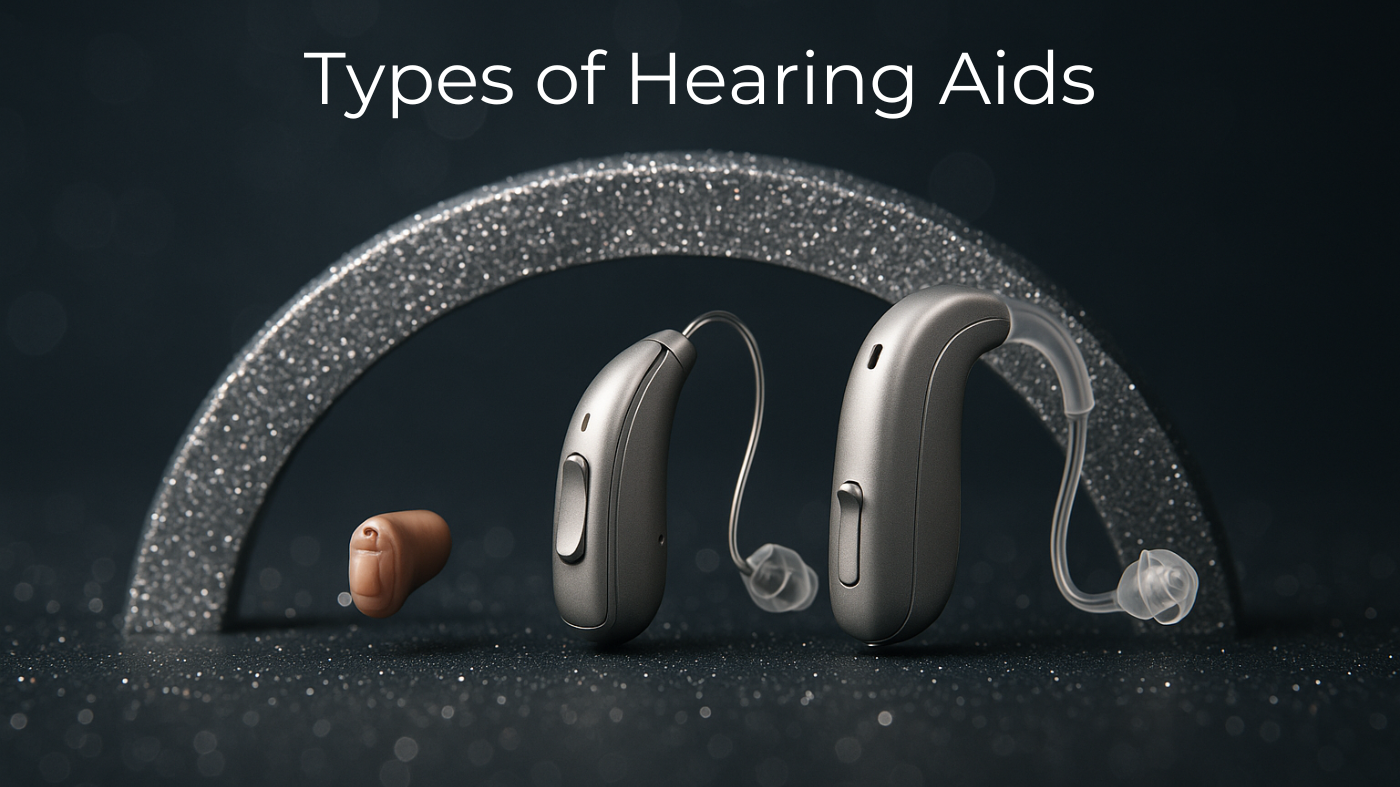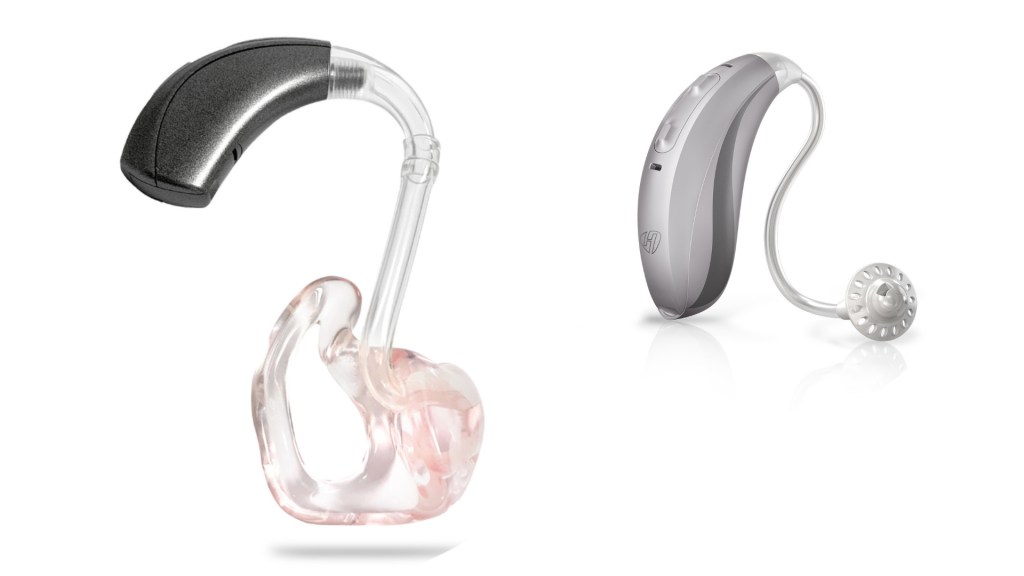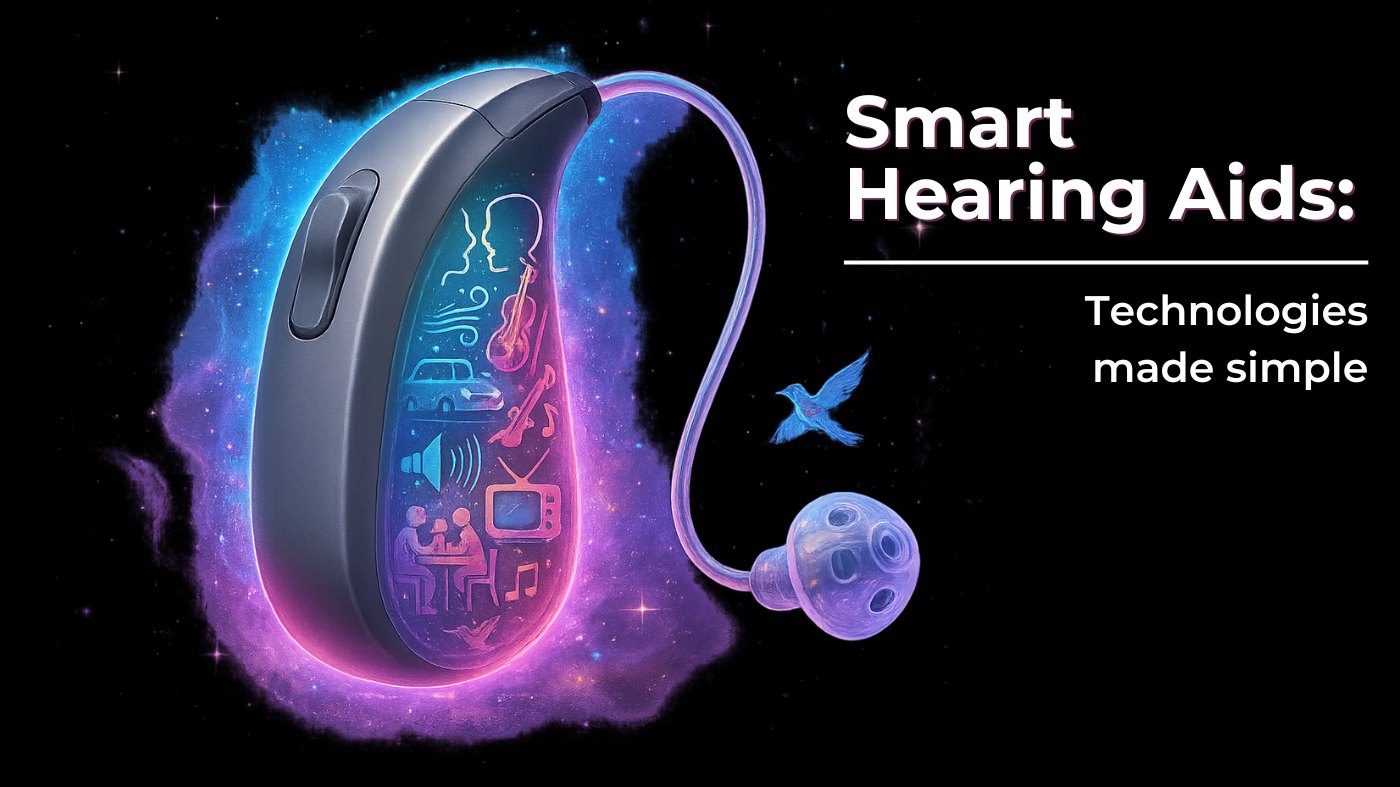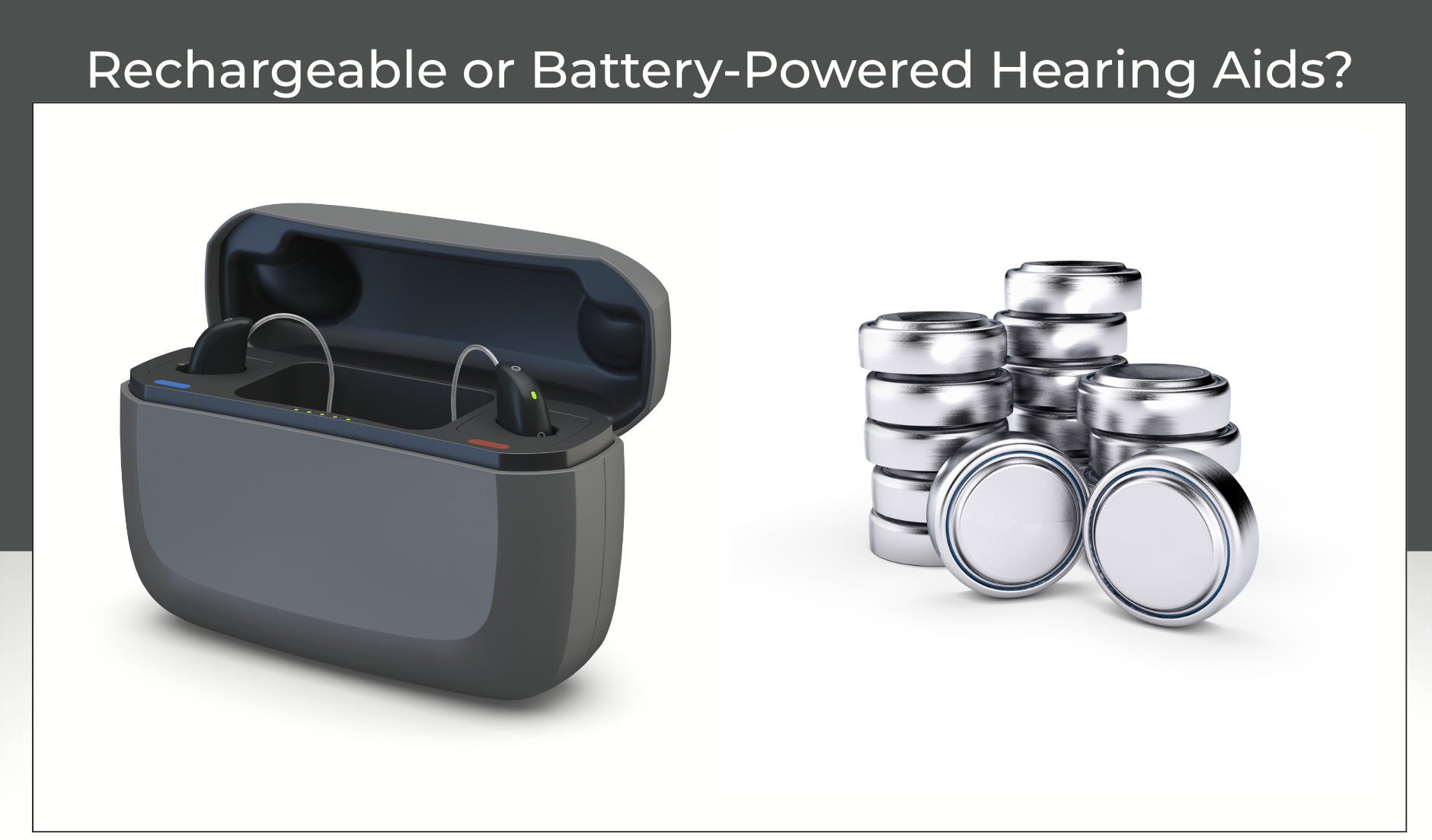
Types of Hearing Aids: Which One Is Right For You?
If you’re researching hearing solutions, you’ve probably come across several different types of hearing aids – like BTE, ITE, RIC, or CIC. But what do these terms mean, and how do you know which style is best for your needs?
This guide explains the most common hearing aid types in simple, practical terms – with honest pros and cons, and no technical jargon.
Table of contents
What Are the Main Types of Hearing Aids?
There are five main types of hearing aids that most people choose from. The best one for you depends on your hearing loss, your lifestyle, and your personal preferences.
1. BTE – Behind-the-Ear Hearing Aids
BTE hearing aids sit behind your ear and send sound through a small tube or wire into the ear canal.
Classic BTE with Tubing
Available with either:
- Thick tubes for strong amplification
- SlimTubes for a more discreet look
Pros:
- Durable and long-lasting
- Ideal for moderate to severe hearing loss
- Easy to handle, even with limited finger dexterity
- Low maintenance
- Can be paired with custom ear molds
Cons:
- More visible than in-ear styles
- Tubing may harden or clog and needs professional replacement every few months
- Slightly less natural sound due to tubing friction

Best for:
People who want a dependable, easy-to-use hearing aid with strong performance.
2. RIC – Receiver-in-Canal Hearing Aids
With RIC hearing aids, the speaker sits directly in your ear canal, connected by a thin wire to the part behind your ear. This is one of the most popular types of hearing aids today.
Pros:
- Clear, natural sound
- Lightweight and very discreet
- Comfortable for extended wear
- Suitable for mild to severe hearing loss
- Interchangeable receivers allow customization
Cons:
- Sensitive to earwax and moisture
- Small parts may need occasional replacement
- Requires some manual dexterity

Best for:
People who want a modern, great-sounding hearing aid with a sleek, almost invisible look.
3. ITE – In-the-Ear Hearing Aids
ITE devices are custom-made to fit in your ear and come in several versions, depending on how deep they sit.
IIC – Invisible-in-Canal
The most discreet option among all types of hearing aids, almost entirely hidden in the ear canal.
Pros:
- Nearly invisible
- No external components
- Allows natural directional hearing
Cons:
- Only for mild to moderate hearing loss
- Fewer features due to small size
- Not suitable for very small ear canals
- Tricky to insert and remove

Best for:
Those prioritizing aesthetics and discretion over advanced features.
CIC – Completely-in-Canal
Slightly larger than IIC but still highly discreet.
Pros:
- Still very small
- Easier to handle than IIC
- May support remote control or app connection
- Preserves spatial awareness
Cons:
- Limited space = fewer features
- Not suitable for very strong hearing loss
- Sensitive to earwax buildup

Best for:
People who want a balance of invisibility and ease of use.
Canal and Concha ITEs
Fill more of the ear canal or outer ear, allowing for more tech features like Bluetooth or rechargeable batteries.
Pros:
- Can include advanced features
- No tubing or wires behind the ear
- Easier to handle
- A good mix of power and discretion
Cons:
- More visible than smaller ITE types
- May be more noticeable during wear

Best for:
Anyone who wants a tech-rich device fully contained in the ear.
4. Rechargeable vs. Battery-Powered Hearing Aids
All types of hearing aids are available in rechargeable and battery-powered versions. Here’s how they compare:
Rechargeable Hearing Aids
Pros:
- Easy overnight charging
- No battery swaps
- Environmentally friendly
- Great for users with limited dexterity
Cons:
- Rechargeables take more space – may not fit in smallest ITE models
- No quick fix if the battery runs out unexpectedly
Maybe also interesting: Hearing aids with Bluetooth
Battery-Powered Hearing Aids
Pros:
- Instantly ready after battery change
- Batteries are easy to find
- Great for travel or camping
- No need for power outlets
Rechargeable or Battery-Powered: 6 Key Factors to Help You Decide
Final Thoughts: Choosing Between Types of Hearing Aids
There is no single best hearing aid for everyone – but there is a best type for you. It depends on your hearing needs, your comfort level with technology, and your lifestyle.
- Love tech, streaming, and sleek design? A RIC hearing aid with rechargeable battery might be your match.
- Prefer simplicity and reliability? Try a classic BTE.
- Want something almost invisible? Check out IIC or CIC hearing aids.
🎯 Pro tip:
Try a few different hearing aid types in real life. You’ll quickly find out which one fits your needs best.
About the author
-
Smart Hearing Aids: The Technologies That Define Modern Devices in 2025
Smart hearing aids are no longer just amplifiers – they’re miniature marvels of high tech. Today’s models pack more computing power than the first lunar lander. Best of all: they don’t just serve your ears – they enhance your overall quality of life. Most of the features described below are now standard in many devices.…
-
Rechargeable vs Battery Hearing Aids: 6 Key Factors to Help You Decide
Rechargeable hearing aids have quickly become a popular choice. But is all the hype justified? Are rechargeable models right for everyone? In this guide, we’ll walk you through 6 important factors to consider when deciding rechargeable vs battery hearing aids. 1. How Easy Should It Be to Use? Battery-powered hearing aids: Rechargeable hearing aids: Bottom…
-
Types of Hearing Aids: Which One Is Right For You?
If you’re researching hearing solutions, you’ve probably come across several different types of hearing aids – like BTE, ITE, RIC, or CIC. But what do these terms mean, and how do you know which style is best for your needs? This guide explains the most common hearing aid types in simple, practical terms – with…



